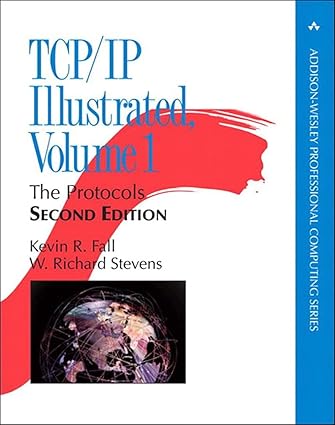TCP/IP Illustrated: A Deep Dive into the Protocols
Introduction
"TCP/IP Illustrated" by W. Richard Stevens is a seminal work in the field of network programming. It provides a comprehensive and in-depth exploration of the TCP/IP protocol suite, the foundation of modern internet communication. This white paper will delve into the key concepts and protocols covered in the book, offering a deeper understanding of how the internet works.
Key Concepts and Protocols
1. The Internet Protocol (IP)
- IP Addressing:
- Understanding IP addresses, both IPv4 and IPv6.
- Subnetting and CIDR.
- IP Packet Format:
- Analyzing the structure of IP packets.
- Header fields and their functions.
- IP Routing:
- How IP packets are routed across the internet.
- Routing protocols like RIP, OSPF, and BGP.
2. The Transmission Control Protocol (TCP)
- TCP Connection Establishment:
- The three-way handshake.
- TCP state diagram.
- TCP Data Transfer:
- Flow control and congestion control mechanisms.
- TCP windowing and retransmission.
- TCP Connection Termination:
- The four-way handshake.
- TCP timeouts and retries.
3. The User Datagram Protocol (UDP)
- UDP Packet Format:
- Understanding the UDP header.
- UDP Characteristics:
- Unreliable and connectionless nature.
- Use cases for UDP.
4. Internet Control Message Protocol (ICMP)
- ICMP Message Types:
- Error reporting messages (e.g., destination unreachable, time exceeded).
- Query messages (e.g., ping, traceroute).
- ICMP Applications:
- Network troubleshooting and diagnostics.
5. Domain Name System (DNS)
- DNS Hierarchy:
- Root servers, top-level domains (TLDs), and domain name registrars.
- DNS Record Types:
- A, NS, MX, CNAME, and more.
- DNS query and response messages.
Practical Applications and Real-World Use Cases
- Network Programming:
- Writing socket-based applications using TCP and UDP.
- Implementing network protocols like HTTP, FTP, and SMTP.
- Network Security:
- Understanding network security threats and vulnerabilities.
- Implementing security measures like firewalls, intrusion detection systems, and encryption.
- Network Administration:
- Configuring network devices like routers and switches.
- Troubleshooting network issues.
- Cloud Computing:
- Understanding the underlying network infrastructure of cloud platforms.
- Designing and deploying scalable network applications.
References
- TCP/IP Illustrated, Volume 1: The Protocols by W. Richard Stevens
- TCP/IP Illustrated, Volume 2: The Implementation by W. Richard Stevens
- TCP/IP Illustrated, Volume 3: Client-Server Programming and Applications by W. Richard Stevens
- RFC Documents: The official specifications for TCP/IP protocols.
- Online Tutorials and Courses: Numerous online resources offer in-depth explanations and practical exercises.
Conclusion
"TCP/IP Illustrated" provides a comprehensive and insightful exploration of the TCP/IP protocol suite. By understanding the fundamental concepts and protocols, you can gain a deeper appreciation for the internet's complexity and power. Whether you're a network programmer, system administrator, or simply curious about how the internet works, this book is an essential resource.



